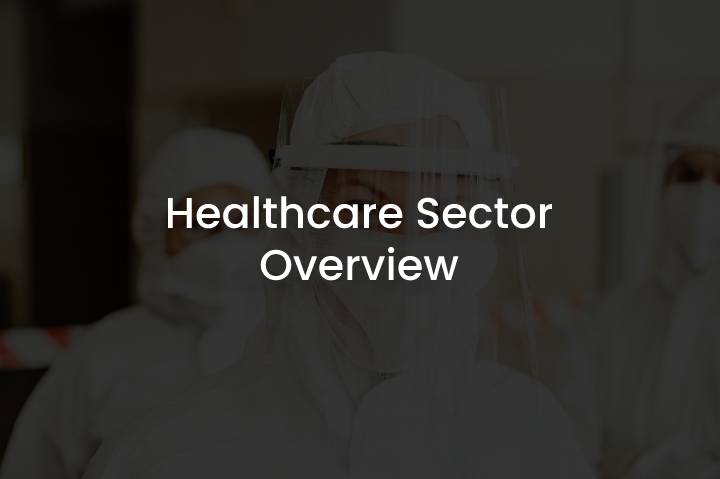Implementing Data Analysis for Operational Optimization and Increased Business Performance
Businesses today have access to more data than ever before, from customer transactions and interactions to operational metrics and financial …
 01 | 02 | 2022
01 | 02 | 2022 The healthcare software development sector is by far one of the fastest growing in terms of the emergence of new products and services as well as the improvement of already existing solutions. Everything from collecting statistical data to calculating expenses and insurance payouts is a part of the extensive healthcare industry as we know it today. It goes way beyond software solely.
In this article, Mark Koelsch, NA President and Co-founder of Agiliway, shares a few thoughts regarding healthcare software development, analyzes major sides of healthcare sector insurance policies, HIPAA, and talks about the most spread types of medical software in the US.
Essentially, before starting any business activity, studying your market and potential customers are very important. While working in healthcare software development, it became obvious why performing extensive research is crucial.
Looking at the effectiveness of the specific drugs or specific procedures on a large data set of patients; to find the usable significance of the data you’re looking at is the core for successful medical research. To prove the effectiveness of a drug or vaccine, the focus groups shall be large in order to support the research result and make them a reliable source for further use. For instance, within the past 18 months, more than 10 billion shots of COVID vaccines have been administered.
Therefore, healthcare researchers are starting to get large data sets to work with regarding the efficiency and potential risks of the given vaccines. Deep research is the key to receiving truthful and reliable information on any medication that’s been produced and utilized by the medical staff in facilities across the globe. The same approach is utilized to research the procedures. For a lot of given diseases or inflictions, there are multiple treatments. And some treatments are better than others. The outcomes of the procedures are analyzed to find the best options.
Since there’s no universal healthcare in the United States, insurance companies are the ones to pay for, say, a specific surgery or procedure. Often, these insurance companies are willing to cover the costs for certain procedures more than others based on their Current Procedural Terminology (CPT). The CPT code is assigned to each medical procedure or service and is further utilized when a report about a patient is submitted to any entity that’s entitled to process and use that data. The analysts then collect the data regarding the given trend to see how and why certain codes get higher coverage rates. This allows also to shape an opinion regarding the financial side of American healthcare, especially when it comes to collections from the insurance companies.
In medical analytics, it is crucial to track quarterly or annual trends to make up an opinion over what’s going on in the industry. Often healthcare facilities have to negotiate the compensation for surgery with an insurance company to get what they are entitled to. Collections are crucial for business’ maintenance, hence, defining margins and expenses will be advantageous.
Cost per case at a specific facility, or to be precise, is very different from what a patient sees in their documents. Moreover, the payment under the CPT code per the same procedure may differ among the facilities. On average, a surgery in the US would cost around $50-60k. However, it doesn’t mean that all that money is coming in and definitely this money isn’t going to people performing the procedures.
The Healthcare industry in the US is one of the most regulated sectors. The use of personal data is protected under the Health Insurance Portability and Accountability Act (HIPAA), which ensures that no data is given unauthorized access.

EHR collects information across the board: from multiple practices, lab facilities, physical therapists, surgeons, etc. and it pulls all the information together into a single tool. Regardless, of which specialists you are visiting, they are going to have all your data with them.
The other main type of software is an EMR. This is practice-specific medical history. So, rather than pull all those different types of information from multiple practices, multiple providers put information together into one location. This is just where the surgeons’ offices, where doctors’ offices or dentists’ offices usually retrieve your data from. This means the specific facilities or offices are only looking for information they are gathering internally, information which they have access to, not needing all the information from different labs or other hospitals, different providers, etc.
Beyond that, a far less frequently seen software package is called Patient Maintained or Patient Health Record. It’s very similar to EHR but gives patients direct access to their data, so essentially, they can go in, they can modify the record, can obfuscate information. It is a rather disturbing type of software because doctors need to have full information for the patient’s sake not because they want to take control of that information away from the patient. When you go to see your provider, you better be 100% honest with them because things you omit from telling your doctor may be crucial in their treatment of you. You just aren’t going to see a lot of this software out there but it still exists.
And the final software package we are going to talk about is focusing on specific tools. That is, for example, if your organization has a specific type of machinery that’s used in the surgery and software that goes with that. And that software monitors the operation of that tool as well as the information the statistics pulled out of that tool in a way that provides that information back to, say, the surgeon. And you’ll see this in a lot of different areas. For example, staffing-only tools, scheduling tools, insurance submission tools. They can be a component of EHR or EMR. Beyond just being a medical device-specific type of tool.
Surgery rooms to waiting rooms rules have changed because of the pandemic. Medical software development companies had to alter the functionality of their products and services to make it possible to stick to the new normal. Switching to remote also encouraged many businesses to apply the software development outsourcing model to their company’s operations. In terms of data security, most companies prefer storing their data on remote servers with limited access by the authorized staff only.
READ ALSO: HOW AGILIWAY ENSURES CLIENTS’ DATA SECURITY
Businesses today have access to more data than ever before, from customer transactions and interactions to operational metrics and financial …
Conversational AI systems can engage in natural conversations and dialogue with humans. Powered by machine learning and natural language processing, …
The decision between hiring a software development company or a freelancer can be challenging for business owners who are looking …